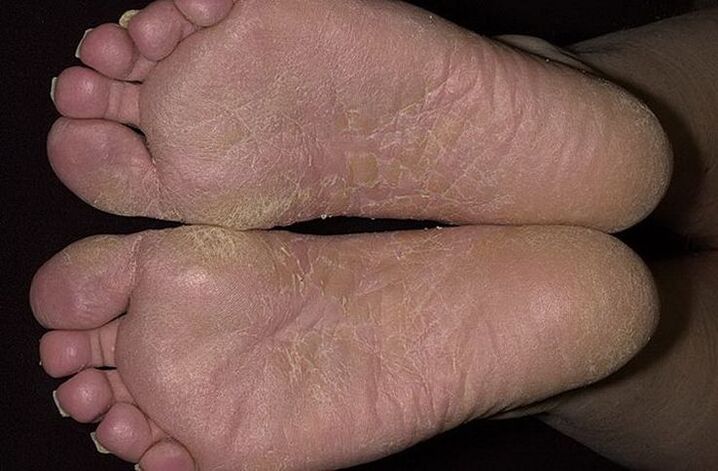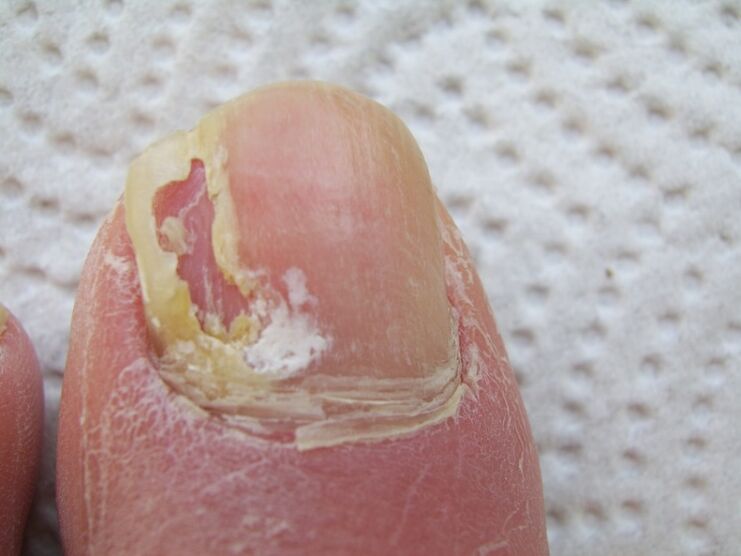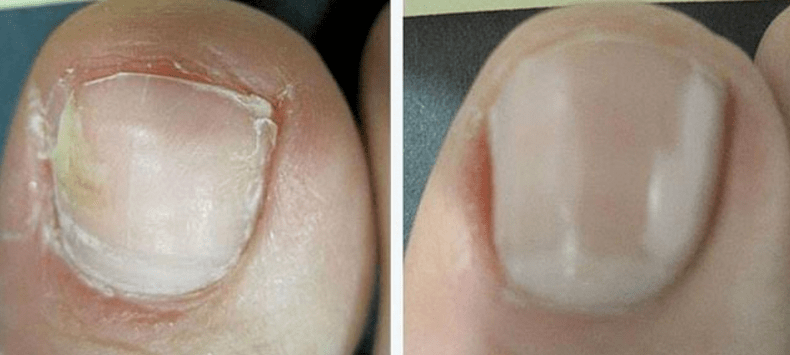Foot mycosis is one of the most common diseases caused by parasitic fungi. In medical practice, there are several types of this pathology. It is important to recognize the fungus in the early stages of foot fungus development. Then it will be faster and easier to get rid of it. In this case, you do not need any special treatment, or even surgical intervention. Since the performance of fungal activity is weak, it is sufficient to use anti-fungal ointments or use folk recipes for bathing.
Fungi and their varieties

Although foot fungus is very popular, not everyone who is infected knows the appearance of foot fungus.
The following are the main types of fungal diseases:
- Scaly or scaly.
- Disorganized. It is characterized by the type of skin abrasions.
- Hypertrophic, atrophic and normal nutritional onychomycosis. The difficulty in treating these diseases is that all varieties can be combined with each other.
- Sweat smells. Its characteristic is that it violates the work of sweat glands.
At different stages of development, this pathology looks different. Foot mycosis is the collective name of two diseases: epidermophytosis and erythrophytosis, and the development process proceeds in the same way.

Squamous fungal disease
In the initial stage, the fungus manifests itself as a failure of one foot, and after a period of time the disease will be transmitted to the other foot.
The skin turns red and then peels off. All patients have different areas of redness, depending on the stage of development. Many people will not even bother with itching in the affected area, and the skin may not peel off. This is why they only turn to dermatologists when their legs are affected by the final stages of the disease.
Sweaty fungal infections

Everyone who suspects this disease should know what kind of foot fungus develops in any form. This pathology is characterized by the appearance of microvesicles on the arch of the foot. Time is running out, they combine together and become large bubbles, which quickly burst out of the shell, and the superficial skin lesions become visible to the naked eye.
As the diaper rash area appears, the pathology can spread to the entire leg. In this case, the patient begins to itch and feel pain. After everything healed, she began to peel.
The most unpleasant disease is the formation of bacterial fungi. In this case, cloudy liquid and pus flow out of the bursting bubbles. At this stage of pathological development, there is a slight increase in body temperature and unbearable pain. The skin of the feet is swollen.
The hyperhidrosis form of mycosis can last for several months. The improvement of the foot condition alternates with recurrence.
Intermediate fungus

This fungus on the skin of the feet is the most common. It appears independently or with squamous pathology. This disease manifests as cracks in the skin, white edges forming around it, and then the skin begins to peel off. The space between the fingers becomes damp. The patient will feel itching and burning. Defects on the skin surface, accompanied by severe pain.
The protective function of the skin decreases and becomes loose. This promotes the penetration of streptococcal infections into the skin. Suppurative inflammation appears, manifested by redness, itching, swelling, and severe pain.
Intertrigal fungi are most often characterized by a long-term chronic course of the disease course. The pain usually subsides in winter and gets worse in summer.
Onychomycosis or nail fungus

When the first signs of the disease appear, the patient's task is to contact the dermatologist in time, and he will decide how to remove the fungus on the legs.
Nail onychomycosis is a more dangerous disease than foot fungal infections because it takes longer to heal.
Types of fungal infections affecting the nail plate:
- Atrophic onychomycosis. First, the nail thins and then collapses.
- Hypertrophic onychomycosis. The thickness of the nails increases, obtaining a yellow color. The length growth stops. The nail plate began to chip and fall off.
- Onychomycosis caused by mold. This pathology does not develop on its own. It usually develops in the context of other diseases. In this case, the nail plate can be painted in any color, from black to green. A week roller is often inflamed.
When neglected, this disease can affect the entire body and even penetrate the internal organs. Pathological changes usually develop from the edge of the nail plate. Streaks, spots and other "patterns" appear first.
treatment method

Not every patient knows how to remove the fungus on the feet, but dermatologists do. Treatment mainly involves preventing the development of fungal infections. In order to prevent the feet from reinfecting the fungus, complex treatments are used:
- External treatment courses. Antifungal ointments, creams, sprays are used in the treatment.
- The course of treatment with antifungal drugs.
- Use antihistamines. They are taken in case of severe itching and hypersensitivity to allergy-causing irritants.
- The treatment process of taking vitamins and mineral elements.
- Antibacterial drugs. They are used in cases of bacterial infections of the body.
By going to a doctor, one will know how to treat fungus in the space between nails, heels and fingers. For the advanced form of the disease, doctors usually prescribe a complex treatment that includes taking pills and using ointments. Systemic drugs are prescribed to patients who have already begun a serious process.
For the treatment of fungal leg infections at home, use the following folk recipes:
- vinegar. Because of its antiseptic properties, wine vinegar is used for bathing.
- Salt and soda water. They are dissolved in water in equal amounts and made into a bath that helps remove fungus on the feet.
- Oak bark, marigold inflorescence, blackberry. Use the decoction of these herbs to clean the affected area of the foot.
The most effective is to use ointments and drugs with various pharmacological effects for complex treatment of fungi. If you follow your doctor's advice and take preventive measures on a regular basis, you will never need treatment.
Antifungal drugs
Use effective antiseptic drugs to remove the fungus on the feet and the space between the fingers.
Since fungi can appear in any form, experts must choose an effective drug to combat this infection. Some drugs are toxic and cause side effects; they are taken under strict supervision of a doctor. The rapid positive result of treatment depends not only on the correct diagnosis of the disease, but also on its stage of development.















